2025 Federal Election
Mainstream Media Election Coverage: If the Election Was a NHL Game, the Ice Would be Constantly Tilted Up and to the Left
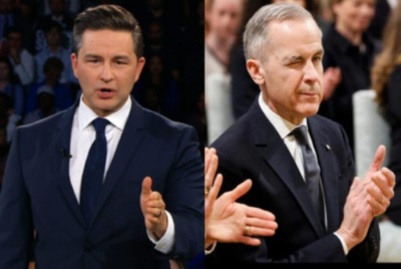
From EnergyNow.Ca
Like good refs for a NHL hockey game, election coverage should be as unbiased as possible and provide balanced judgement. In Canada, mainstream media rarely provides this.
By Jim Warren
Canada’s Conservatives face an uphill battle when it comes to obtaining unbiased coverage in the mainstream Canadian news media. Any in doubt need only watch a half hour of election coverage on CBC or tune-in to the CTV news channel, which is stacked with left leaning election commentaries favoring the Liberals, despite their abysmal record over the last 10 years, which has all but been forgotten by many media journalists in their attempt to help Canadians forget as well.
The Liberal government’s provision of tens of millions in grants and tax credits to support the jobs of journalists has certainly not made reporters any less Liberal-friendly.*
But the truth is, the Liberals did not actually need to bribe most mainstream journalists and their employers to gain their support. They already had it. And that’s been bad news for the fortunes of the gas and petroleum sectors along with many of the other things we do to create wealth in Canada (like farming, mining, construction and manufacturing, including petrochemicals).
Year’s before the Liberals launched their 2019 media subsidization programs, Canada’s legacy media outlets had embraced climate alarmism and were okay with the demonization nonrenewable energy. They functioned like public relations agents for the environmental movement’s anti-Alberta oil campaign (2008-2021).
For two decades now, conventional media outlets have been publishing and broadcasting sensationalized misinformation about the need to make deep and immediate cuts to CO2 and methane emissions to save the planet from imminent doom.
For most journalists in the conventional media, it was no great leap to fall in step behind the Trudeau government’s anti-oil, gas and pipelines agenda. Climate alarmists in the media assumed Justin Trudeau, Steven Guilbeault, Jonathan Wilkinson and other members of the Liberal cabinet were on the side of the angels. Now, with Justin Trudeau out of the picture, it has become evident that current Prime Minister Mark Carney will continue with the anti-oil, gas agenda of Justin Trudeau, who personally endorsed him and has been advising Trudeau for a number of years to not only keep the carbon tax, but increase it.
As a result, the Liberal assault on conventional energy went largely unchallenged in the legacy media.
Thankfully there are a few notable exceptions. Outstanding columnists and journalists like Don Braid and Brian Lilly have survived. They have drawn attention to the economic madness of the assault on oil, gas and pipelines, the consequent stifling of economic growth and their effects on national unity.
And there are of course large numbers of journalists and policy analysts working online outside the mainstream who have provided the bulk of journalistic criticism of the Liberals. People like Dan McTeague have been making appearances in online interviews and commentaries posted to you tube. And many online news sites including Northern Perspective have been keeping tabs on Liberal mismanagement and corruption.
As a general proposition many mainstream journalists under the age of 40 have swallowed exaggerated misinterpretations of climate science. And they accept at face value the environmental movement’s irrational claims about the urgent need to massively and rapidly reduce the consumption of oil and natural gas. Journalists rarely address the economically ruinous effects of reducing oil and gas consumption too fast and by too much.
This is in part because many of them are economically illiterate. If they went to university they typically studied soft subjects like sociology, gender studies and social justice. The values and beliefs they adopted at university are reinforced by their favourite social media sites.
They know more about things like the plight of the transgendered than they do about wealth creation or how to foster economic growth. This makes it rather easy for them to accept the gospel according the federal Liberals. “Oil is bad and why would we fuss over fiscal and economic problems when deficits and debt are just numbers that take care of themselves?”
Mainstream journalists haven’t had their eye on the ball when it comes to the social and economic harm caused by Liberal environmental policy. We’re not talking about chump change lost because of a bit of irritating red tape.
My own calculations, under an experimental scenario, show that the cost of not having Energy East, Northern Gateway, and the Trans mountain expansion fully approved and operating for a 10 year period was approximately $290 billion in lost revenue. (The historical sample period was from 2013-2023, a period of mostly low global oil prices, which suggests the $290 billion figure significantly underestimates the potential for lost revenue)
The Fraser Institute and others have conducted and published important studies identifying the massive decline in investment in the petroleum and gas industries and more generally across many economic sectors. In the first five years the Liberals were in office their energy related environmental policies like Bill C-69 (The Impact Assessment Act) in particular, cost an estimated 200,000 jobs nationally and a massive reduction in investments in Canada’s oil and gas sectors.
These losses were not mourned by the conventional media based in Central Canada. Some journalists assumed clobbering the energy industry in the west was a good thing because it would mitigate climate change. They were either unaware of or uninterested in the people who lost jobs and the damage being done to the Canadian economy.
No less influential is the mainstream media’s laser like focus on issues primarily relevant to Toronto and Montreal. Problems on the prairies typically escape notice. As a result some low information voters in the regions where Canadian elections are decided are unclear as to whether Saskatchewan is a city or a province.
Supporting evidence
On May 2 of 2024 an article appeared in EnergyNow which used published research and the actual scientific reports issued by the inter-governmental Panel on Climate Change (IPCC) to demonstrate that the mainstream media in North America and Europe have bought into hyperbolic misinterpretations of climate science. The column showed how Journalists have taken as truth the false claims of overly zealous environmental activists about the pace of global warming and how the green transition will supposedly have little to no adverse impact on most people’s livelihoods and economic well-being.
The article explains how journalists, climate alarmists and environmental activists inhabit the same corner of the social media universe. The research shows many journalists are more likely adopt the opinions and information they encounter on Twitter (Now X) and other online forums to inform their stories than the scientific research published by organizations like the IPCC.
May 2, 2024, Opinion: How social Media and Sloppy Journalism Misrepresent Climate Science
The fact is too many Canadian journalists have bought into the environmental zealotry of an online tribe which both shares and shapes their beliefs in relation to climate science and their views about oil and gas. This has been the case since the mid to late 2000s.
To repeat. The Liberals did not need to subsidize journalists to get them to buy into their environmental and energy policies—they were already onside.
The real reason for the subsidy programs was to prevent media employers from laying off journalists. Times have been tough for the mainstream news media. The solvency of many newspapers in particular is tenuous. Network television has also been suffering. The CBC goes $1.2 billion into the red each year, which is explained by the fact it attracts just 4.4% of Canada’s viewing audience during prime time. Streaming has radically changed North Americans viewing preferences and the sources they subscribe to.
Mainstream media is in palliative care. Plowing government grant money into it is like investing in the buggy whip business well after Henry Ford had cranked out tens of thousands of Model Ts.
There may be some mainstream journalists who will suffer a pang or two of common sense or integrity and criticize Liberal environment and energy policy during the election campaign. But it seems highly unlikely mainstream media outlets will desert the Liberals and get behind the Conservatives. Anyone betting the farm on that sort of outcome needs to set down the crack pipe.
For CBC to come out swinging against Mark Carney would require one of those proverbial “caught him in the act and thrown in jail” moments.
All that being said, we might take a bit of faint hope from an older tendency among journalists. Some of them still have an underlying psychological need to pounce on gotcha moments.
These brand of journalists are on the lookout for evidence exposing malfeasance, errors, and unexplained flip flops which make politicians look bad, and simultaneously help journalists look like smart and fearless champions of the truth. Some journalists hope to be viewed like reincarnations of Woodward and Bernstein of Watergate fame and become legends for taking down the powerful.
However, the gotcha urge is not what it once was. For many younger journalists the catechism of all things woke and progressive encourages them to ignore gotcha ammunition which might embarrass environmentally sanctimonious Liberals.
In the final analysis, the election hopes of supporters of the western energy sector will depend largely on election coverage in the nonconventional, mostly online, media.
Add to that a Conservative campaign focused on building back Canada and elminating Liberal anti-resource development red-tape and bureaucracy, to move away from reliance on the US, which is what the election should be focused on.
*In March 2024 the Liberals added $58 million to cover three years of support for one just one of their three subsidy funds for journalists, the Local Journalism Initiative.
This fund provides media outlets with a 35% tax credit for every journalist they have on staff.
NOTE: The opinions expressed in this commentary are those expressed the author and do not necessarily reflect the views, positions, or policies of Enerpoint iMedia Corp. o/a EnergyNow.
2025 Federal Election
Protestor Behind ‘Longest Ballot’ Chaos targeting Poilievre pontificates to Commons Committee
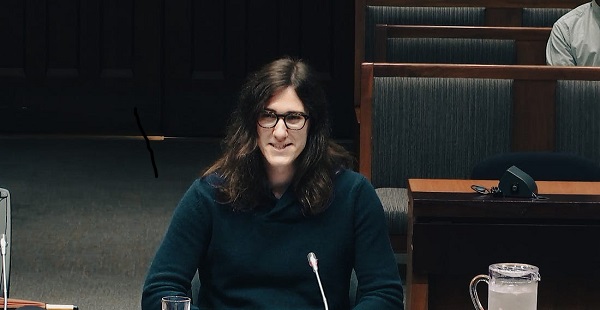
Lawmakers confront organizer Tomas Szuchewycz for flooding ridings with placeholder candidates, targeting Pierre Poilievre’s seat, and wasting public resources.
Szuchewycz’s most notorious move came in Carleton — the riding of Conservative Leader Pierre Poilievre, where the ballot swelled to 91 names, stretching nearly a metre and forcing Elections Canada to redesign how it printed and handled the vote. The LBC framed the stunt as a protest against Canada’s first-past-the-post electoral system. But to most voters, it looked nothing like a principled reform campaign. What they saw was an effort aimed squarely at Poilievre, meant to bury his name among a wall of nobodies and turn the vote into a farce.
Elections Canada had to scramble to manage the chaos: printing extra‑long ballots, re‑training workers, and creating a last‑minute write‑in workaround in Battle River–Crowfoot to keep ballots usable. Seniors and disabled voters complained about the physical size and complexity of the ballot; poll workers faced new logistical headaches; public money was wasted.
At Tuesday’s hearing, Szuchewycz showed no contrition and offered no practical alternative to the system he had tried to upend. Instead, he accused MPs of having a “conflict of interest” in writing election law and demanded that power be handed to an undefined “permanent, non‑partisan body” — without explaining who would select it, how it would operate, or how it would be accountable to Canadians.
The LBC, whose actions led to metre-long ballots in ridings like Carleton (91 candidates) and Battle River–Crowfoot (86), claims to oppose Canada’s first-past-the-post system. But when asked how his proposed independent reform body would be formed, selected, or held accountable, Szuchewycz had no answers.
Conservative MP Michael Cooper led the charge, accusing Szuchewycz of overseeing a signature-harvesting scheme that involved electors signing blank nomination forms—potentially in violation of the Canada Elections Act. He tabled a January 2024 tweet and an August 2024 YouTube video showing organizers gathering signatures under the claim that candidate names would be “filled in later.”
Szuchewycz denied the accusation, claiming nomination papers had either candidate names or the phrase “all candidates” filled in. But when he tried to discredit Cooper’s evidence by calling it “AI-generated,” the committee chair issued a warning for casting doubt on the authenticity of a Member’s documents without basis. The comment was withdrawn under pressure.
Still, Cooper was unsatisfied, warning Szuchewycz that misleading Parliament could amount to contempt.
Other witnesses—experts and former elected officials—were equally critical of the LBC’s tactics. Dr. Lori Turnbull, a professor at Dalhousie University, called the stunt “undesirable” and a “waste of resources,” though she praised Elections Canada for adapting quickly by allowing a write-in workaround in Battle River–Crowfoot to avoid printing a literal wall of names.
Professor Peter Loewen of Cornell University added that the LBC’s ballot-stuffing “violates the spirit” of competitive democracy and burdens front-line elections staff with unnecessary logistical chaos. He warned that a third-party group acting like a political party without oversight was a loophole that needed closing.
Meanwhile, former Liberal MP Louis-Philippe Sauvé described the real-world toll of the stunt: longer lineups, stressed poll workers, and accessibility hurdles for elderly and visually impaired voters.
In stark contrast to these grounded critiques, Szuchewycz’s testimony revolved around vague accusations of “conflict of interest” by MPs and a call to remove Parliament from electoral reform altogether. No constitutional roadmap. No governance model. No practical enforcement mechanism.
At the end of the day, what Tomas Szuchewycz has done isn’t just a stunt, it’s an insult. He claims Canadians “know what he’s protesting,” but let’s be honest: most voters had no clue this was about electoral reform. What they saw was a campaign to flood ballots with nonsense names in key ridings, especially against the Leader of the Opposition, and create chaos for chaos’s sake.
The takeaway wasn’t a conversation about democracy. It was a spectacle, and one that mocked the very voters he pretends to represent. Lets be clear, This wasn’t activism, it was ego masquerading as principle. And it reeked of entitlement.
Tomas Szuchewycz is the embodiment of unchecked privilege: a man who hijacked our electoral process, wasted taxpayer dollars, and offered nothing in return but smug contempt for the very democracy that gave him the space to pull his stunt.
He claims Canadians understood his message. They didn’t. Most people saw a confusing mess, an attack on the Opposition Leader, and a joke made at the expense of voters, poll workers, and the electoral system itself.
So yes — reform is coming. And it can’t come soon enough.
Parliament must not just close the loopholes it should make sure that when someone deliberately sabotages the integrity of an election, they are held accountable, including being forced to repay the public for the cost of their chaos.
Because in a democracy, you have the right to protest.
But not the right to turn an election into a farce on the public’s dime.
Subscribe to The Opposition with Dan Knight
Invite your friends and earn rewards
2025 Federal Election
Post election report indicates Canadian elections are becoming harder to secure
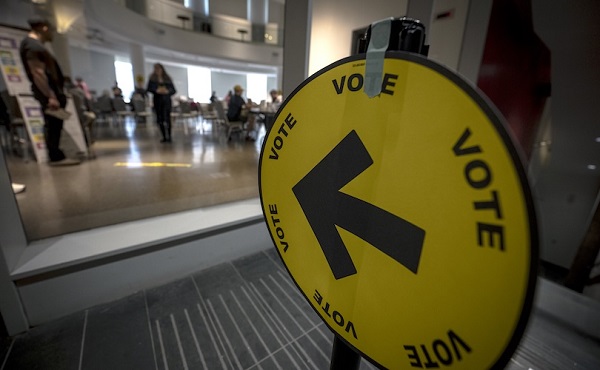
Chief Electoral Officer Stéphane Perrault highlights strong participation and secure voting, but admits minority politics, rising costs, and administrative pressures are testing the system’s limits.
Monday in Ottawa, Stéphane Perrault, Canada’s Chief Electoral Officer, delivered a long press conference on April’s federal election. It was supposed to be a victory lap, record turnout, record early voting, a secure process. But if you listened closely, you heard something else: an admission that Canada’s election machinery is faltering, stretched thin by a system politicians refuse to fix.
Perrault touted the highest turnout in 30 years, 69 percent of eligible voters, nearly 20 million Canadians. Almost half of those ballots were cast before election day, a dramatic shift in how citizens take part in democracy.
“Twenty years ago, less than 7% voted early. This year, nearly half did,” Perrault told reporters. “Our system may have reached its limit.”
That’s the core problem. The system was built for one decisive day, not weeks of advance voting spread across campuses, long-term care homes, mail-in ballots, and local Elections Canada offices. It’s no longer a single event; it’s an extended process that stretches the capacity of staff, polling locations, and administration.
Perrault admitted bluntly that the 36-day writ period, the time between when an election is called and when the vote happens, may no longer be workable. “If we don’t have a fixed date election, the current time frame does not allow for the kind of service preparations that is required,” he said.
And this is where politics collides with logistics. Canada is once again under a minority government, which means an election can be triggered at almost any moment. A non-confidence vote in the House of Commons, where opposition parties withdraw support from the government, can bring down Parliament in an instant. That’s not a flaw in the system; it’s how parliamentary democracy works. But it leaves Elections Canada on permanent standby, forced to prepare for a snap election without knowing when the writ will drop.
The result? Sixty percent of voter information cards were mailed late this year because Elections Canada couldn’t finalize leases for polling stations on time. Imagine that, more than half the country got their voting information delayed because the system is clogged. And that’s when everything is supposedly working.
The April election cost an estimated $570 million, almost identical to 2021 in today’s dollars. But here’s the kicker: Elections Canada also spent $203 million just to stay ready during three years of minority Parliament. That’s not democracy on the cheap. That’s bureaucracy on retainer.
Perrault admitted as much: “We had a much longer readiness period. That’s the reality of minority governments.”
No Foreign Interference… But Plenty of ‘Misinformation’
Canada’s top election official wanted to make something perfectly clear: “There were no acts of foreign interference targeting the administration of the electoral process.” That’s the line. And it’s a good one… reassuring, simple, the kind of phrase meant to make headlines and calm nerves.
But listen closely to the wording. He didn’t say there was no interference at all. He said none of it targeted the administration of the vote. Which raises the obvious question: what interference did occur, and who was behind it?
Perrault admitted there was “more volume than ever” of misinformation circulating during the 2025 election. He listed the greatest hits: rumors that Elections Canada gives voters pencils so ballots can be erased, or claims that non-citizens were voting. These are hardly new — they’ve appeared in the U.S. and in Europe too. The difference, he said, is scale. In 2025, Canadians saw those narratives across more channels, more platforms, more communities than ever before.
This is where things get interesting. Because the way Perrault framed it wasn’t that a rogue actor or a foreign intelligence service was pushing disinformation. He was blunt: this was a domestic problem as much as anything else. In his words, “whether foreign or not,” manipulation of information poses the “single biggest risk to our democracy.”
Perrault insists the real danger isn’t foreign hackers or ballot-stuffing but Canadians themselves, ordinary people raising questions online. “Information manipulation, whether foreign or not, poses the single biggest risk to our democracy,” he said.
Well, maybe he should look in the mirror. If Canadians are skeptical of the system, maybe it’s because the people running it haven’t done enough to earn their trust. It took years for Ottawa to even acknowledge the obvious , that foreign actors were meddling in our politics long before this election. Endless commissions and closed-door reports later, we’re told to stop asking questions and accept that everything is secure.
Meanwhile, what gets fast-tracked? Not a comprehensive fix to protect our democracy, but a criminal investigation into a journalist. Keean Bexte, co-founder of JUNO News, is facing prosecution under Section 91(1) of the Canada Elections Act for his reporting on allegations against Liberal candidate Thomas Keeper. The maximum penalty? A $50,000 fine and up to five years in prison. His reporting, incidentally, was sourced, corroborated, and so credible that the Liberal Party quietly dropped Keeper from its candidate list.
If people doubt the system, it isn’t because they’re gullible or “misinformed.” It’s because the government has treated transparency as an afterthought and accountability as an inconvenience. And Perrault knows it. Canadians aren’t children to be scolded for asking questions, they’re citizens who expect straight answers.
But instead of fixing the cracks in the system, Ottawa points the finger at the public. Instead of rebuilding trust, they prosecute journalists.
You don’t restore faith in democracy by threatening reporters with five years in prison. You do it by showing, quickly and openly, that elections are beyond reproach. Until then, spare us the lectures about “misinformation.” Canadians can see exactly where the problem lies, and it isn’t with them.
The Takeaway
Of course, they’re patting themselves on the back. Record turnout, no servers hacked, the trains ran mostly on time. Fine. But what they don’t want to admit is that the system barely held together. It was propped up by 230,000 temporary workers, leases signed at the last minute, and hundreds of millions spent just to keep the lights on. That’s not stability. That’s triage.
And then there’s the lecturing tone. Perrault tells us the real threat isn’t incompetence in Ottawa, it’s you, Canadians “sharing misinformation.” Excuse me? Canadians asking questions about their elections aren’t a threat to democracy, they are democracy. If the government can’t handle people poking holes in its story, maybe the problem isn’t the questions, maybe it’s the answers.
So yes, on paper, the 2025 election looked like a triumph. But listen closely and you hear the sound of a system cracking under pressure, led by officials more interested in controlling the narrative than earning your trust. And when the people running your elections think the real danger is the voters themselves? That’s when you know the elastic isn’t just stretched. It’s about to snap.
-
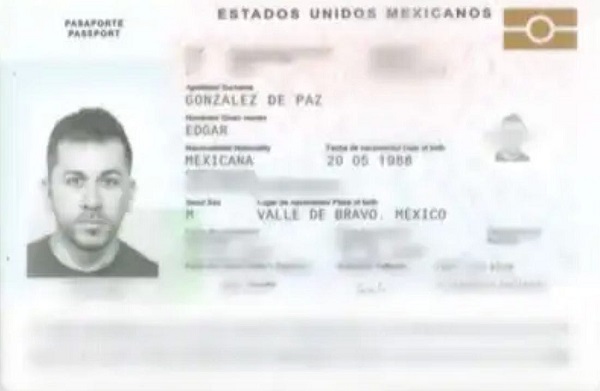
 Crime2 days ago
Crime2 days agoCBSA Bust Uncovers Mexican Cartel Network in Montreal High-Rise, Moving Hundreds Across Canada-U.S. Border
-

 Environment2 days ago
Environment2 days agoThe Myths We’re Told About Climate Change | Michael Shellenberger
-
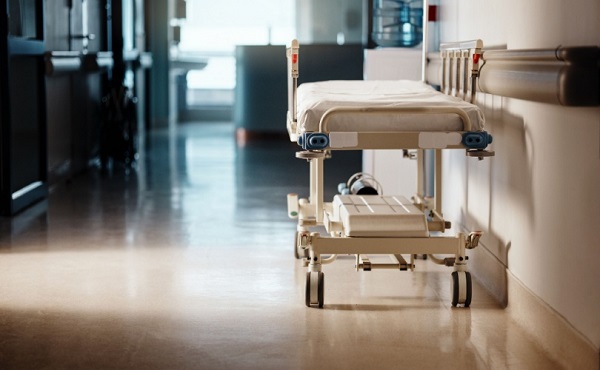
 Health2 days ago
Health2 days agoLack of adequate health care pushing Canadians toward assisted suicide
-
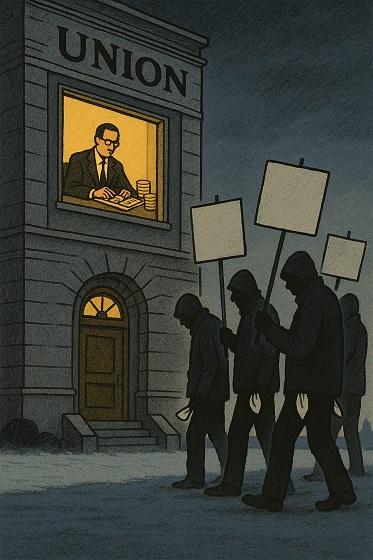
 Alberta1 day ago
Alberta1 day agoATA Collect $72 Million in Dues But Couldn’t Pay Striking Teachers a Dime
-

 Artificial Intelligence2 days ago
Artificial Intelligence2 days agoAI Faces Energy Problem With Only One Solution, Oil and Gas
-
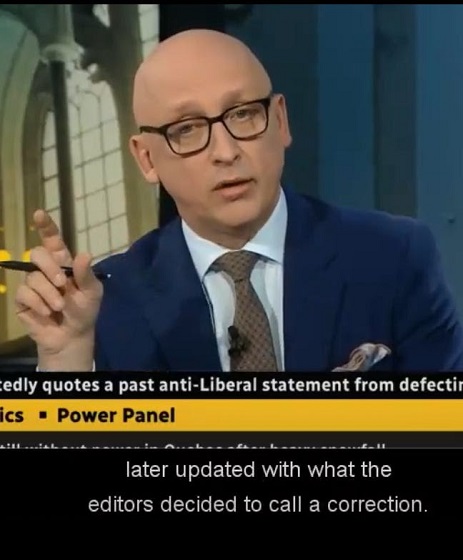
 Media1 day ago
Media1 day agoBreaking News: the public actually expects journalists to determine the truth of statements they report
-
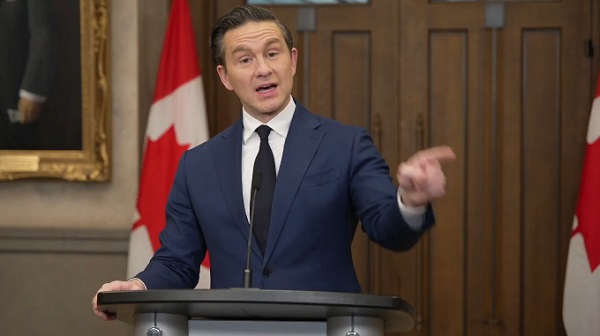
 Artificial Intelligence1 day ago
Artificial Intelligence1 day agoAI seems fairly impressed by Pierre Poilievre’s ability to communicate
-
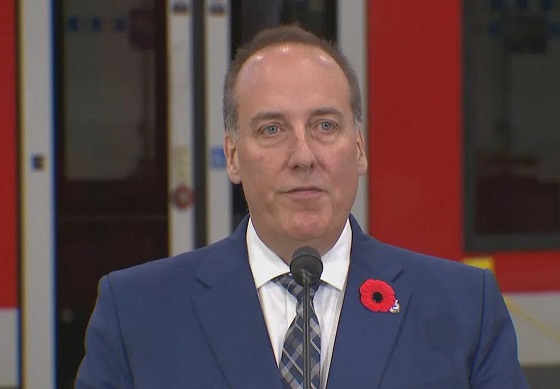
 National1 day ago
National1 day agoWatchdog Demands Answers as MP Chris d’Entremont Crosses Floor











